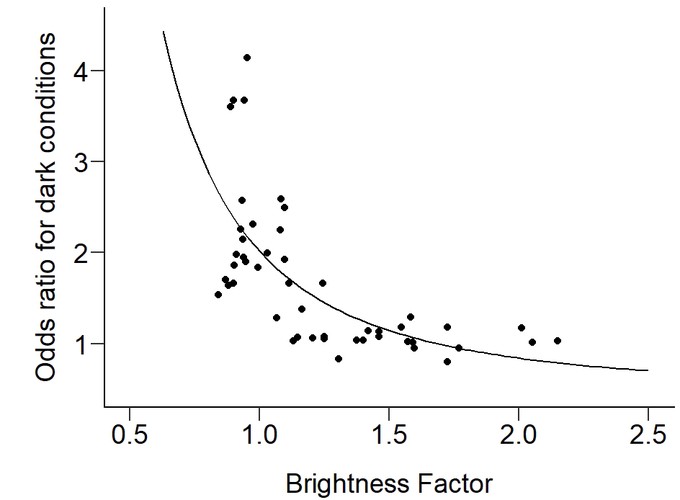Road brightness and cycling rates after-dark

Road brightness and cycling rates after-dark
Abstract
Governments across the world are aiming to increase cycling as a mode of transport. Lighting can play an important role in encouraging cycling after-dark and making it safer. This paper describes ongoing research to establish a basis for design guidance when lighting for cyclists. Comparison of cyclist counts and estimated illuminance levels suggest a small increase in illuminance after-dark can significantly reduce the negative impact darkness has on cycling rates. Experimental work investigating obstacle detection by cyclists reveals that cycle lighting may not provide any benefit for detecting obstacles on lit roads and may even make detection worse. The vertical position of the front cycle lamp may also be important, with hub-mounted cycle lamps providing an improvement over conventional handlebar-mounted cycle lamp in some lighting circumstances. Cycle lamps also serve the purpose of making cyclists more visible but looked-but-failed-to-see incidents highlight drivers may fail to detect cyclists even when they are highly visible. Lighting should therefore be considered alongside other approaches to cyclist safety, one of which is introducing presumed liability as a legal consideration to increase driver’s attention for cyclists.